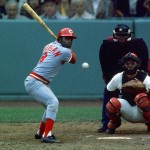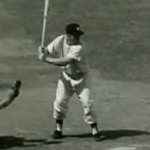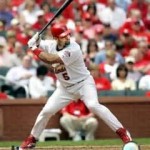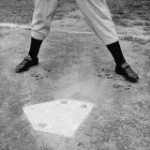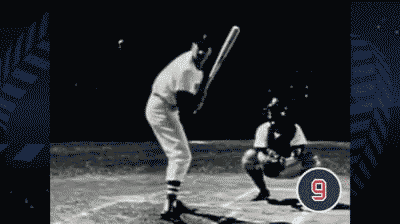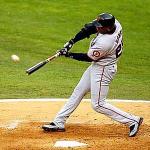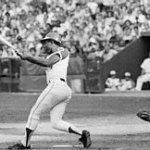Many will argue, “Is there only one correct way for a batter to hit a baseball”? And the correct answer depends upon what any individual hopes to accomplish in the baseball setting that he finds himself. A Little-Leaguer who is playing in his first organized game, and is not yet accustomed to the tormenting threat of being hit by a pitch(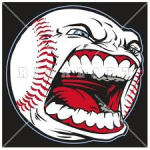 )might at first exude a confidence that he normally has when “dad” is softly lobbing the ball into that part of the strike zone
)might at first exude a confidence that he normally has when “dad” is softly lobbing the ball into that part of the strike zone  where his natural body mechanics allows his arms and hands to synergize the coordinates of his swinging bat to contact the ball with remarkable proficiency and redirect the pitched ball on the ground, or in the air, in the opposite direction.
where his natural body mechanics allows his arms and hands to synergize the coordinates of his swinging bat to contact the ball with remarkable proficiency and redirect the pitched ball on the ground, or in the air, in the opposite direction.
As an aspiring player matures he recognizes that the effect of his mechanical effort to strike the ball in a manner that provides him the “most” satisfaction might be different from others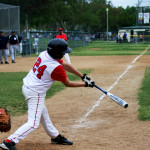
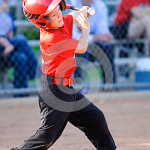
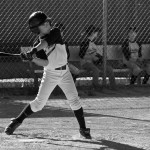 . Every person who picks up a bat, to hit a baseball, wants to hit a “Home-Run” (over the fence), or at least a solidly contacted ascending line-drive that could split the outfielders and allow his speed to garner a double, triple, or an “inside-the-parker.”
. Every person who picks up a bat, to hit a baseball, wants to hit a “Home-Run” (over the fence), or at least a solidly contacted ascending line-drive that could split the outfielders and allow his speed to garner a double, triple, or an “inside-the-parker.”
Many “little-kids” dream of hitting home-runs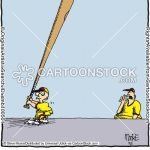 , but their reality usually has them settling for merely making contact with the pitched ball, and hoping that a grounder through the infield will get them a base-hit. Their instincts tell them that only “big-guys” can hit the ball over the fence for Home-Runs.
, but their reality usually has them settling for merely making contact with the pitched ball, and hoping that a grounder through the infield will get them a base-hit. Their instincts tell them that only “big-guys” can hit the ball over the fence for Home-Runs. 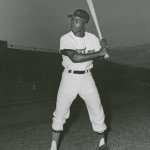 Until they learn that proper mechanics is the requirement for hitting a baseball correctly, they are doomed to languish in the realm of mediocrity or below. In the early years of a baseball experience, it seems obvious that the “big-guy” is the one to count on for the big home-runs. But as a growing experience mounts, it is perceived by an astute observer that “form” and “technique” play essential roles in developing into a proficient bats-man
Until they learn that proper mechanics is the requirement for hitting a baseball correctly, they are doomed to languish in the realm of mediocrity or below. In the early years of a baseball experience, it seems obvious that the “big-guy” is the one to count on for the big home-runs. But as a growing experience mounts, it is perceived by an astute observer that “form” and “technique” play essential roles in developing into a proficient bats-man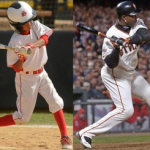 . And, what better way for a youngster to find the right form or technique than to copy the batting stance and swing of his favorite Major League Player?
. And, what better way for a youngster to find the right form or technique than to copy the batting stance and swing of his favorite Major League Player?
When we were kids, my brother and I would play a game we called “Strike-Out.” Sometimes we included a few neighborhood kids, but most often it was simply him against me. We would find an area on a public tennis court, or an isolated section of an opened grass or dirt area. We’d mark off the parameters of boundaries for fair or foul balls, and designate the distances for what would be a single, double, triple, and home-run.
After a “choose-up” with alternating hands clasping the continuum of the lesser end of the bat, then either of us would win the right to be the visitor or home team. It was a game of Pitcher vs Batter, usually using a tennis ball. (If the playing area was limited, we’d use a whiffle-ball.)
The Pitcher and Batter would be more close to each other than normally, the emphases being to strike out the batter, or make him work especially hard to hit the ball solidly while testing the quickness of his reflexes. The game carried on for 9 or more innings.
The catcher-umpire was a marked off area on the fence or wall behind the batter, to designate strikes and balls. Each of us would make a list of our favorite batters (right or left-handed) and assemble a 9-batter line-up, while making an effort to mimic their stances and batting styles.
Sometimes we’d have the same players representing each of our teams. We both like Ted Williams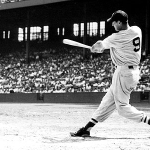 , Stan Musial, Babe Ruth
, Stan Musial, Babe Ruth , Jimmy Fox, Mickey Mantle
, Jimmy Fox, Mickey Mantle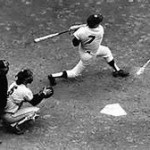 , Yogi Berra, Joe DiMaggio, Lou Gerrig, Al Kaline, Dick McCaullif, Norm Cash, Rocky Collivito, Willy Mays, Hank Aaron, Duke Snider, and others.
, Yogi Berra, Joe DiMaggio, Lou Gerrig, Al Kaline, Dick McCaullif, Norm Cash, Rocky Collivito, Willy Mays, Hank Aaron, Duke Snider, and others.
It was fun, and provided our initial means to figuring out which batters’ techniques best suited our own particular physical attributes for batting a ball efficiently.
Did any, or all, of the players on that list of hitters practice what would be considered the correct batting mechanics? We didn’t know, but we had fun copying their styles, and hoping to our diligence would advance us to inevitable “stardom.”
“Hitting a baseball is the hardest thing to do in all of sports,” was a statement made by Mr. Ted Williams. And, from the list of the players above, he was probably the Game’s most astute practitioner of correct body mechanics for Batting. His scientific inquiry into what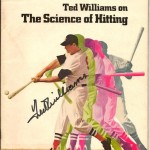 constituted a precise manner for which to hit a baseball most efficiently was revolutionary for his time. But, in the aftermath of his great and successful career, he attained many ardent followers, But few were able to understand and duplicate his relevant and practical theories, and their applications.
constituted a precise manner for which to hit a baseball most efficiently was revolutionary for his time. But, in the aftermath of his great and successful career, he attained many ardent followers, But few were able to understand and duplicate his relevant and practical theories, and their applications.
In this “ultra-modern” era of Baseball, the players are bigger and stronger; the pitchers consistently throw harder than their predecessors and the batters are capable of consistently hitting the ball farther than ever before. With the advent of so many multiples of “off-speed” pitches to complement their blazing fast-balls, pitchers who are closer to flawless mechanics seem to be able to dominate most (if not all) batters that they face. The “Premier Pitching Principle” leaves most modern batters at a loss for productive bats-man-ship. But what the “modern batsmen” fail to realize is that there is a Principle for Batting that would supersede the predominance that the “modern pitcher” seems to have acquired.
The “Premier Pitching Principle” leaves most modern batters at a loss for productive bats-man-ship. But what the “modern batsmen” fail to realize is that there is a Principle for Batting that would supersede the predominance that the “modern pitcher” seems to have acquired.
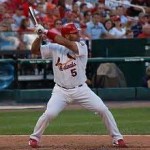
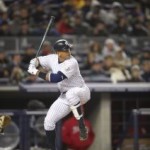
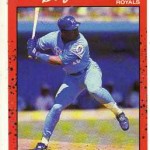
The missing link in applying the hitting principle has always been the inconsistent visual acuity of the batter in accurately detecting the speed of the fast-ball, as well as the direction and varying speeds of “breaking” and other off-speed pitches. All this, of course, was due to excessive movement of the head, the primary culprits being the high stance and batter’s stride (or high leg-kick). Although the pitcher’s arsenal of distracting and illusory forces will always wreak their havoc on unsuspecting “head-gliders,” the Einsteins of a new era of batting prominence would set the standard for proficient hitting elegance.
Hitting a baseball is the most difficult task to perform in all of sports.” That’s what Ted Williams once said about “batting,” the claim about which has been verified by the many expert athletes who have tested the veracity of such an arguable statement.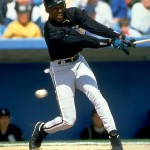 Then why would someone (like myself) have the audacity to declare that “Batting-Efficiency is a Simple Process”?
Then why would someone (like myself) have the audacity to declare that “Batting-Efficiency is a Simple Process”?
IF ITS SCIENCE IS UNDERSTOOD!
Most astute baseball observers recognize that “batting a baseball” proficiently can be esteemed as an artistic display of uncommon physical prowess. Those who demonstrate a high degree of talent in any of the various art forms could easily be described as “artists.”
There is adequate evidence to indicate that many or most good artists (of which Baseball’s Bats-men are included) have a “natural” propensity toward the artisanship in which they are engaged. But their optimal level of proficiency is most often derived from the degree to which they accumulate enhanced understanding by means of scientific examination of all aspects of their chosen profession.
Therefore, hitting a baseball most effectively would have to elicit from the batter’s technique a scientific component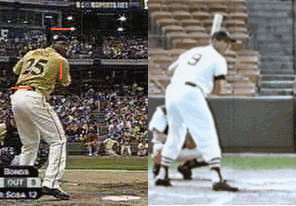 to complement his otherwise unfulfilled artistic talent. Thus the process is simple and the results are sure if the Science is understood. BUT!
to complement his otherwise unfulfilled artistic talent. Thus the process is simple and the results are sure if the Science is understood. BUT!
WHAT IS THE ESSENCE OF SIMPLICITY?
Einstein made E=MC2 look like a simple formula that would enlighten an ignorant, chaotic world as to the heightened prospect of infinite possibility. But that simple acronymic equation involves a seemingly endless continuum of sequential deliberation to effectuate a profitable facsimile thereof.
Simplicity is the integration and coordination of life’s infinite array of variables brought within the control of understanding. Simplicity is not the beginning of primitive evolvement, but rather the end result of organization. When chaos is changed into order, the universe (one voice) sings in simple chords of harmonious function.
The only way to describe the best of batters is that “he makes it look simple.” Look at how Barry Bonds and Ted Williams approached “Hitting”! Although it is not really simple, abiding by a strict discipline of simple mechanics, they had perfected their technique(s) through arduous, repetitive labor, from which the human physical endeavor appeared effortless and instinctive.
The three major components in effecting the proper technique for batting a baseball are these: balance, vision, and power. As the pitcher throws the ball, the batter’s strong balanced position allows his eyes to focus on the point where the ball is being released.
Preliminary movement implies that his body is “gathering” itself to brace for any number of possible conditions. The body maintains a low center of gravity to ensure stability, while shifting its weight slightly inward (not back) to initiate a quick twisting response to the ball as it presumably enters the “zone.”
The quick twisting response is effected by a rapid sequence of fluid rotary movements simultaneously by the entire turning body, beneath the stationary head. If balance and focus are maintained from start to finish, the power and effectiveness will be evident in the beauty of the “follow-through.”
A batter establishes stability and balance to perform his task when his center of gravity is low. His ability to see the ball most clearly is determined by the extent to which his eyes are on a parallel level to the ball, and the degree to which the body and head maintain a stable vehicle for proper focus.
Power is generated most effectively with the body in a stable, balanced position, from which all movements can be produced most speedily, and with a minimum strain to accompanying body parts. The centripetal force provided by the stable position of the vertical axis produces the powerful centrifugal force, which magnifies the power elicited by the turning hips and shoulders.
The rules are simple and orderly. To abide by them and commit them to proper interpretation are what seem to be difficult, especially to those who prefer to act on their own fallible human instincts instead of a sound basic principle.
A prominent 19th century philosopher makes this statement for our consideration, “The higher false knowledge builds on the basis of evidence obtained from the physical senses, the more confusion ensues and the more certain is the downfall of its structure.” Therefore, make it SIMPLE—by letting Principle speak for itself! The scientifically minded “artist-of-the-bat” should understand and adhere strictly to the rules of his mental-physical application, and rest his performance on this sure foundation. He should hold his thought perpetually to the idea that his natural talent and indisputable scientific certainty can and will evoke from Principle the rule for mastering the most difficult task in all of sports.
Coming Soon: Important things to remember in applying the Principle for Correctly Hitting a Baseball.
